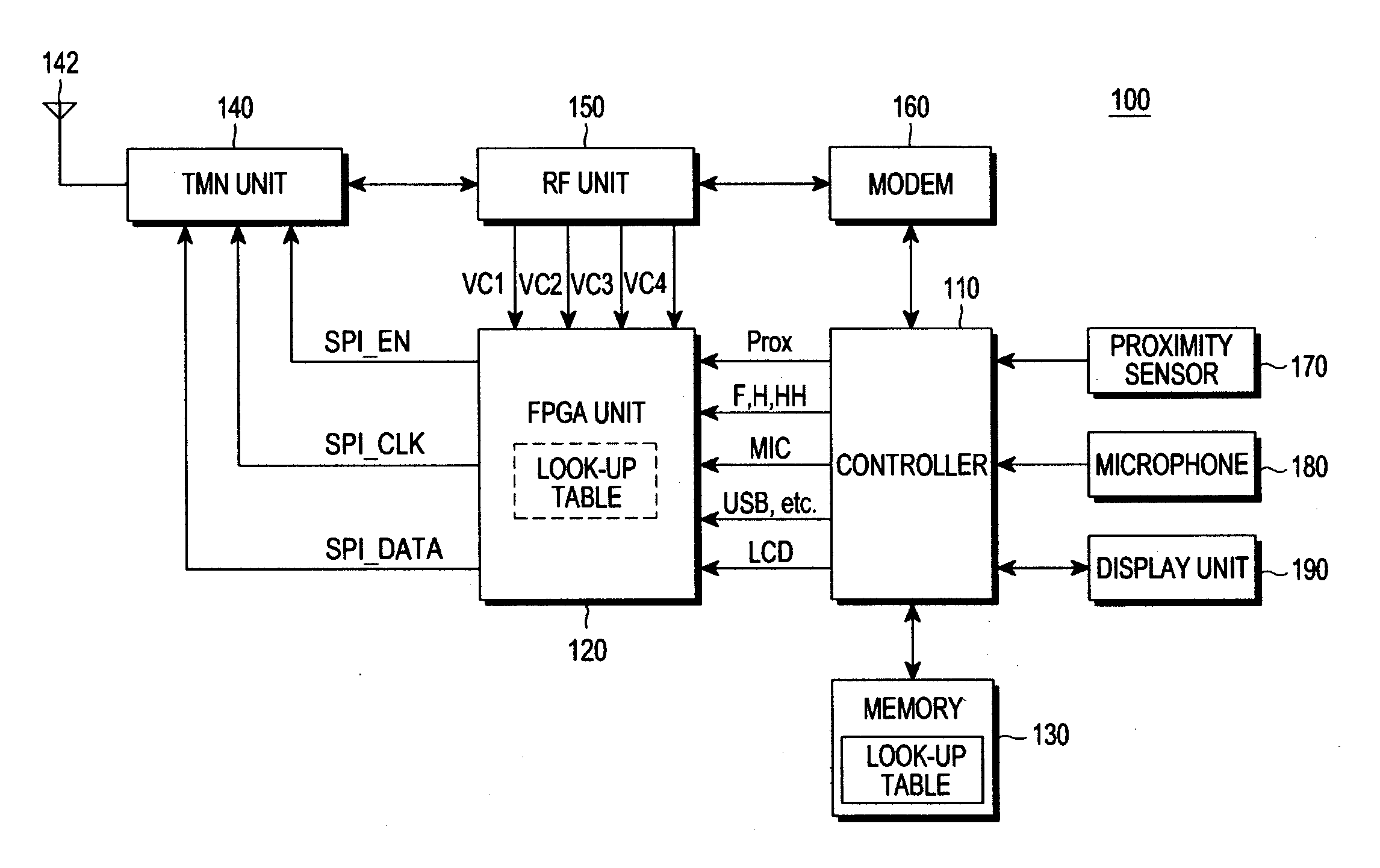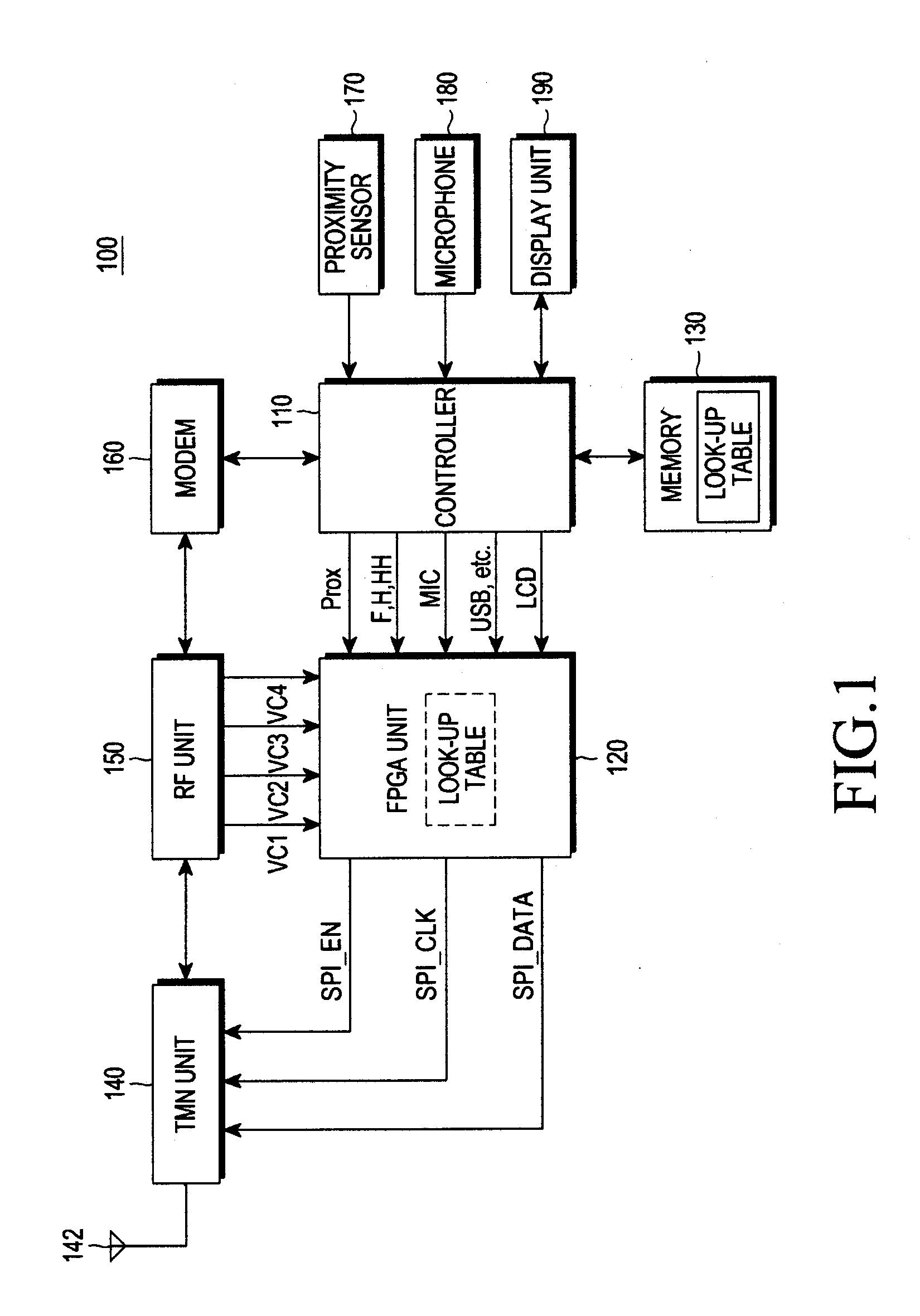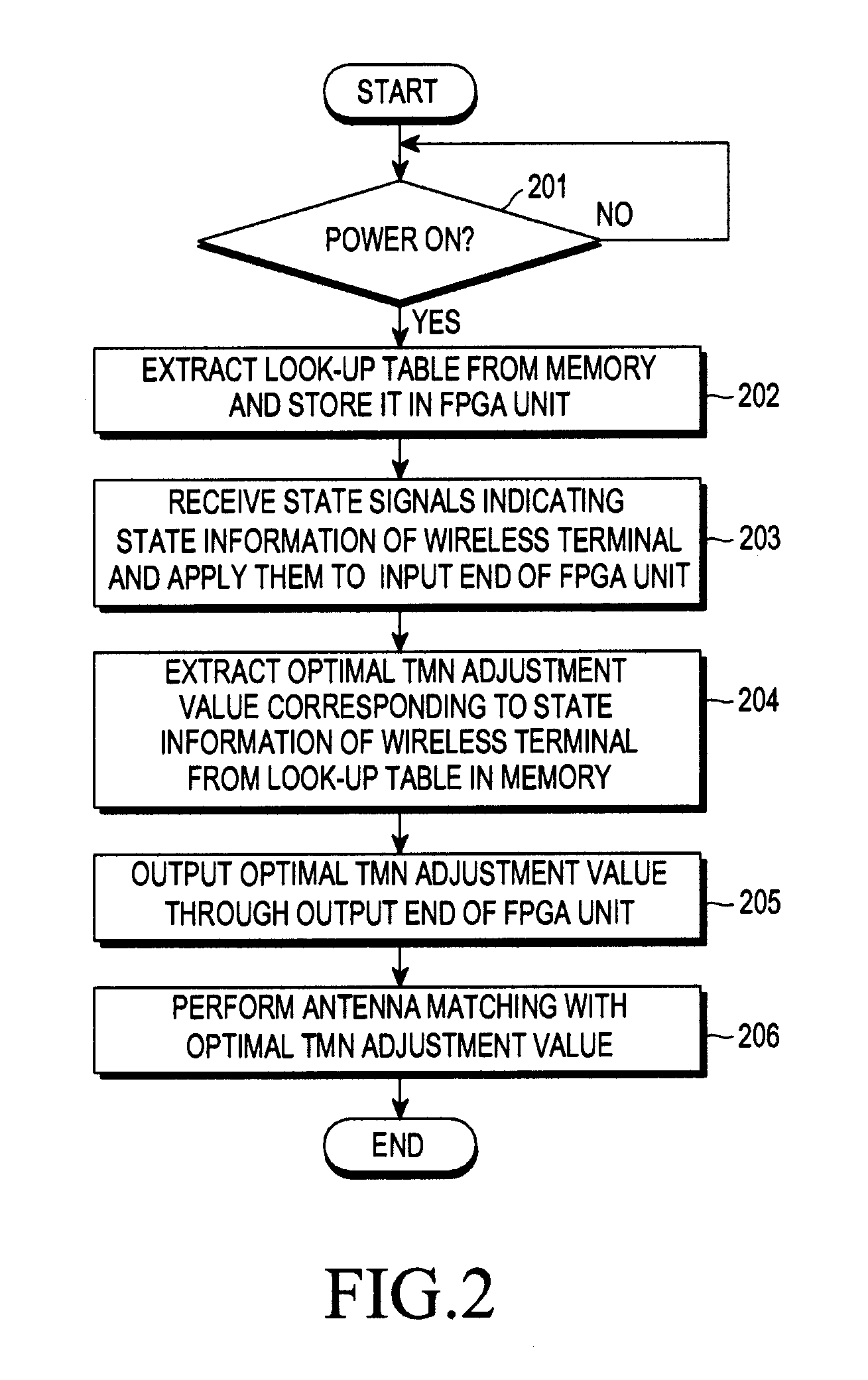Apparatus and method for matching antenna in wireless terminal
- Summary
- Abstract
- Description
- Claims
- Application Information
AI Technical Summary
Benefits of technology
Problems solved by technology
Method used
Image
Examples
Embodiment Construction
[0014]Exemplary embodiments of the present invention will be described herein below with reference to the accompanying drawings. Like reference numbers are used to refer to like elements through the drawings.
[0015]The terms and words used in the following description and claims are not limited to the bibliographical meanings; they are merely used herein to enable a clear and consistent understanding of the invention.
[0016]It is to be understood that the singular forms “a,”“an,” and “the” are intended to encompass the plural forms unless the context clearly dictates otherwise. Thus, for example, reference to “an” embodiment or “a” particular element or feature includes reference to one or more embodiments, elements or features, respectively.
[0017]Embodiments of the present invention avoid the shortcomings of the FMN scheme described above by implementing an efficient Tunable Matching Network (TMN) scheme. The TMN scheme uses a variable LC circuit instead of the fixed LC circuit and m...
PUM
 Login to View More
Login to View More Abstract
Description
Claims
Application Information
 Login to View More
Login to View More - R&D
- Intellectual Property
- Life Sciences
- Materials
- Tech Scout
- Unparalleled Data Quality
- Higher Quality Content
- 60% Fewer Hallucinations
Browse by: Latest US Patents, China's latest patents, Technical Efficacy Thesaurus, Application Domain, Technology Topic, Popular Technical Reports.
© 2025 PatSnap. All rights reserved.Legal|Privacy policy|Modern Slavery Act Transparency Statement|Sitemap|About US| Contact US: help@patsnap.com



